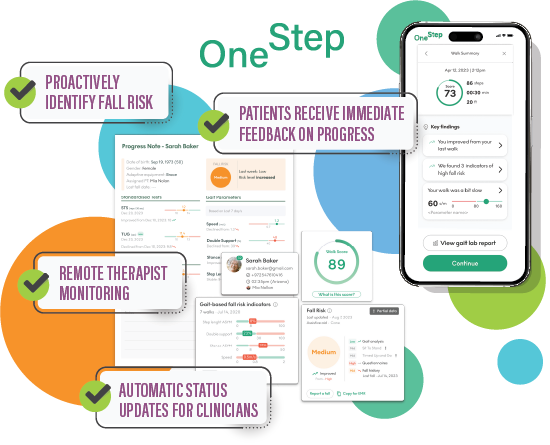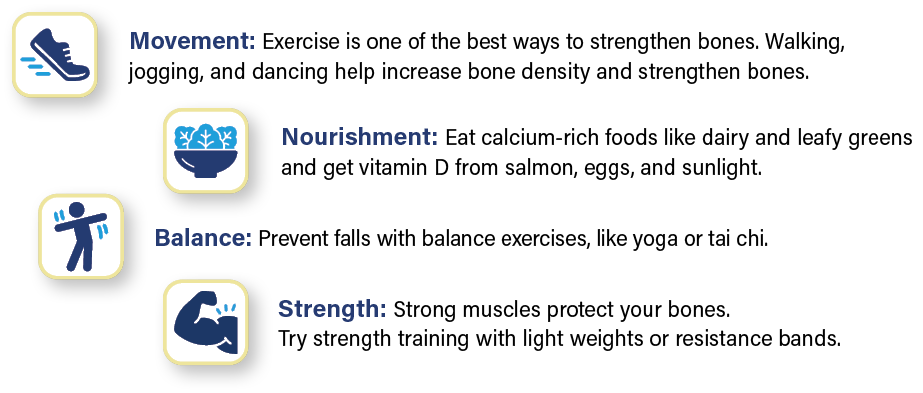OneStep, the AI-powered digital care platform, today announces an exciting partnership with Healthcare Therapy Services, Inc. (HTS), a leading provider of contract therapy services. This collaboration brings OneStep’s innovative technology into HTS partner skilled nursing, CCRC and outpatient sites, empowering therapists with advanced tools to proactively prevent falls and improve care outcomes for older adults.

This partnership reflects the shared commitment of OneStep and HTS to enhance quality of life and longevity by integrating innovative technology into senior care. The collaboration leverages OneStep’s smartphone-driven gait analysis to address one of the most critical challenges facing all seniors and senior living communities – fall prevention. Falls are still the leading cause of injury and death among people aged 65 or older. The partnership between HTS and OneStep has the potential to set a new standard for proactive care.
The pilot program, launched at Bethel Wellness Community in Evansville, IN, has already shown promise in helping therapists identify fall risks early and intervene in a timely manner. By leveraging OneStep’s AI-powered motion analysis, HTS therapists can seamlessly monitor residents’ mobility, stability, identify areas of muscle and skeletal weakness. A therapist can monitor even the slightest changes in stability and balance and make timely interventions to prevent falls and major injuries. These capabilities align with HTS’s mission to provide innovative, high-quality therapy services.
“HTS is proud to collaborate with OneStep to bring the brilliant combination of AI along with cutting-edge balance technology to our communities,” said Amanda Green, Executive Vice President of Marketing & Strategy at HTS. “This partnership enables us to offer proactive solutions that reduce fall risks and enhance the overall care experience for our residents.”
OneStep provides a comprehensive digital care platform that uses smartphone sensors to transform real-life movement into clinical insights. This platform includes tools for real-time data collection, AI-driven insights, telehealth capabilities, remote therapeutic monitoring and administrative management. OneStep utilizes a remote monitoring solution that allows for therapists to continue to guide and oversee patients even after they complete therapy and return home.
“Our partnership with HTS demonstrates the transformative potential of motion analysis in empowering care teams to proactively address fall risks and improve residents’ quality of life.” Patrick Tarnowski, Chief Commercial Officer OneStep.
The success of the pilot program paves the way for broader implementation across all HTS partner communities. By incorporating OneStep’s technology into their offerings, HTS strengthens its position as a leader in senior care innovation, helping communities promote their services and attract new residents.
About OneStep
OneStep is an AI-powered digital care platform that uses smartphone sensors to transform real-life movement into clinical insights, helping healthcare providers assess, treat, and monitor patients from anywhere. Gait (i.e. human motion) is a leading indicator of health, and by making gait analysis as simple as stepping on a bathroom scale, OneStep empowers clinicians with actionable data to improve mobility, reduce falls, and enhance patient engagement. Our FDA-listed technology eliminates the need for wearables, delivering lab-quality gait and motion analysis in seconds.
With a focus on personalized, proactive care, OneStep serves rehabilitation providers, health systems, and medical device manufacturers, helping them optimize clinical decision-making, streamline operations, and increase revenue through Remote Therapeutic Monitoring (RTM). We’re committed to transforming gait into a vital sign and making healthcare more precise and connected- improving quality of life for millions.
About HTS
Healthcare Therapy Services, Inc. (HTS) partners with senior care communities to provide contract therapy solutions that improve outcomes and elevate care standards. With a focus on quality care delivery and innovation, HTS delivers proactive therapy services that meet the unique needs of older adults. HTS has therapy partnerships in Indiana, Kentucky, Michigan and Ohio and rehabilitates an estimated 24,500 patients per year.




